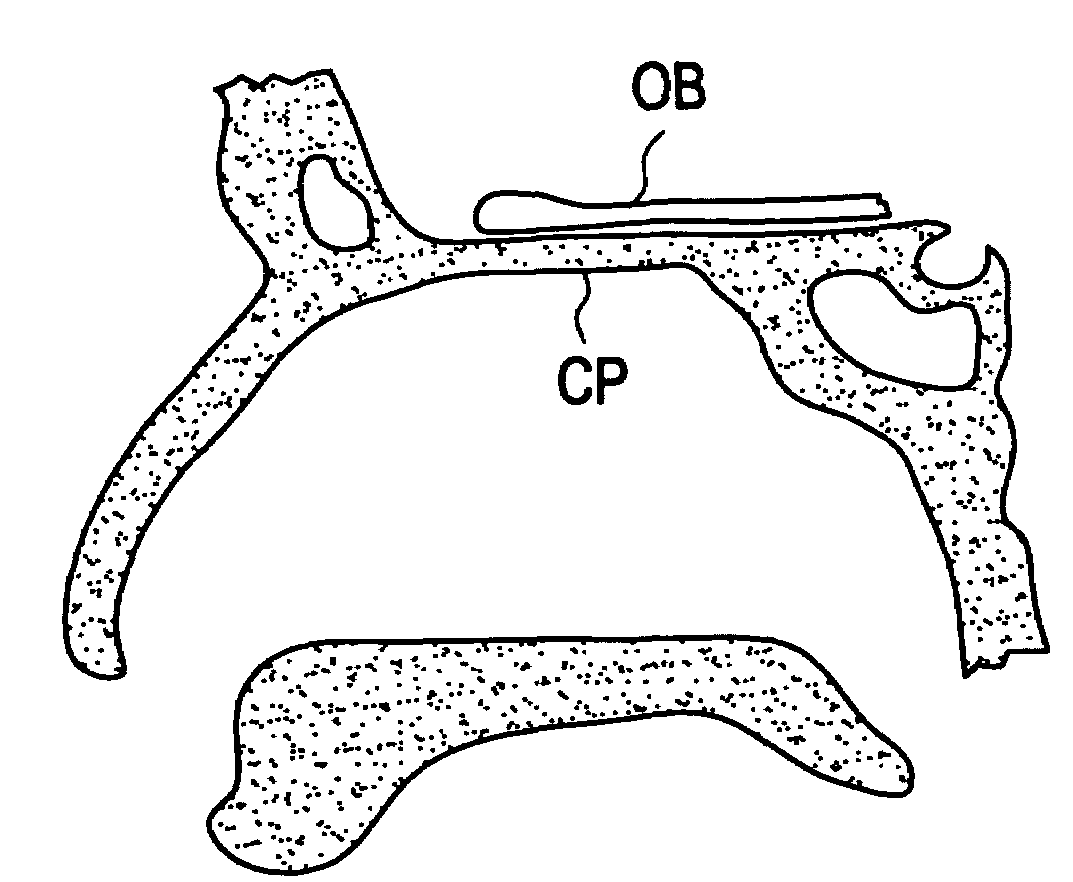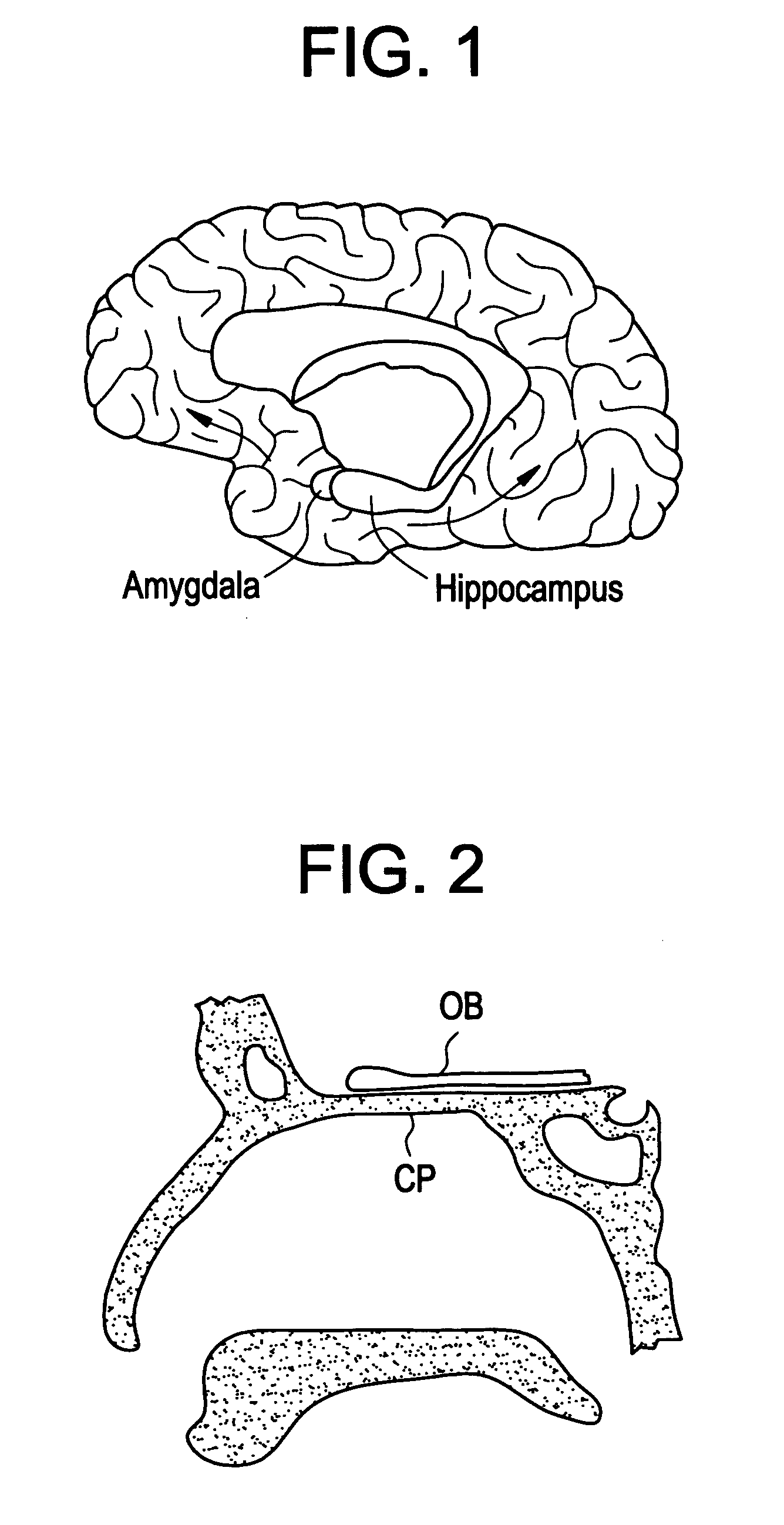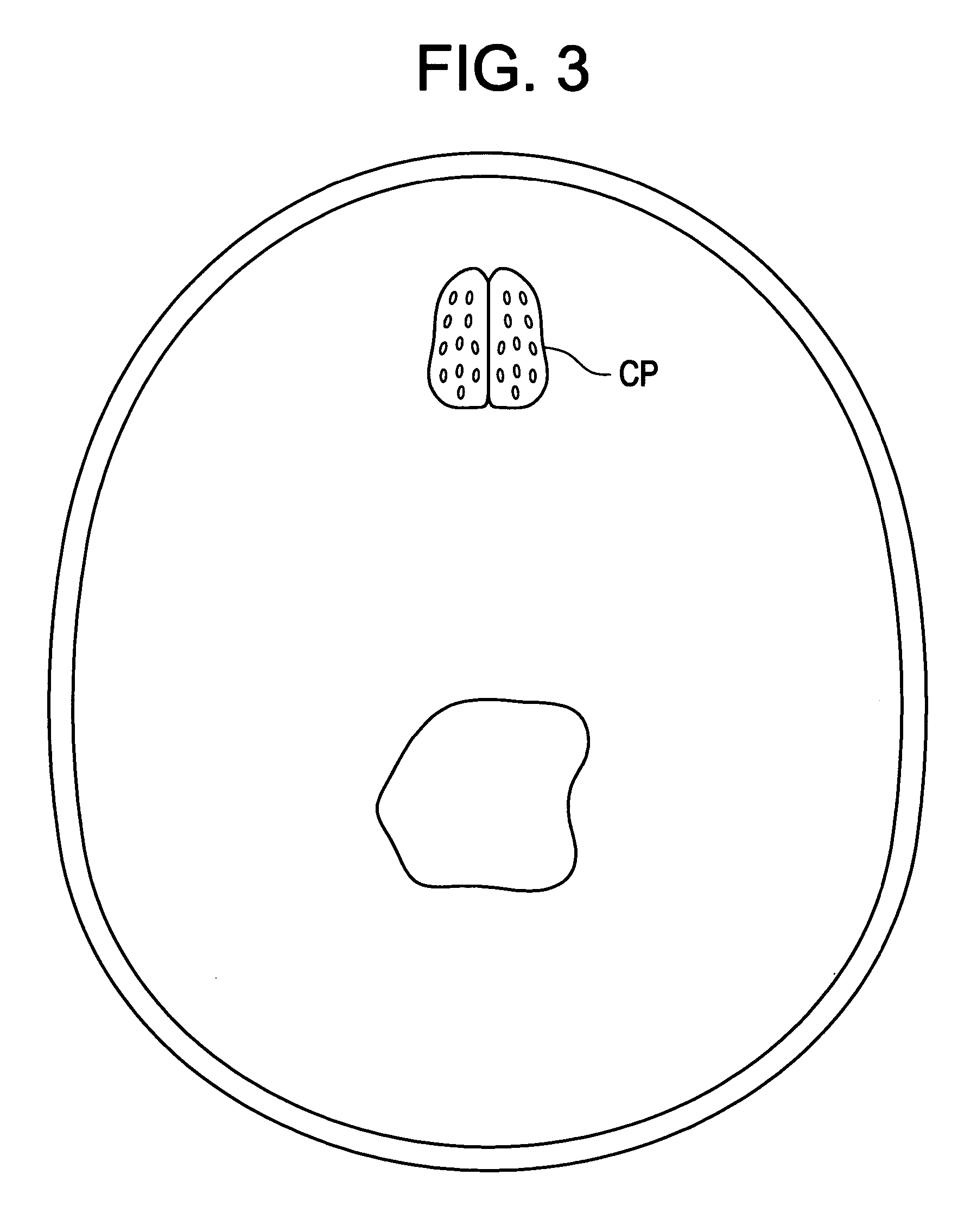Intranasal red light probe for treating Alzheimer's disease
a red light probe and alzheimer's technology, applied in the field of alzheimer's disease intranasal red light probe, can solve the problems of accelerating the destruction of other portions of the ad brain, prefrontal cortex, and the loss of learning ability of people suffering from ad, so as to reduce neuronal cell death, improve nerve tissue recovery, induce neurite process sprouting
- Summary
- Abstract
- Description
- Claims
- Application Information
AI Technical Summary
Benefits of technology
Problems solved by technology
Method used
Image
Examples
Embodiment Construction
[0037]Now referring to FIG. 1, there is provided a saggital cross section of a brain afflicated with Alzheimer's Disease. In general, the disease begins in the hippocampus, spreads to the amydgala, and proceeds anteriorly to the prefrontal cortex.
[0038]Now referring to FIG. 2, the cribriform plate CP is a wafer-thin ledge of porous bony tissue located beneath the prefrontal cortex portion of the brain and above the nasal cavity. The porosity of the cribriform plate is filled with olfactory nerves extending from the olfactory bulb OB (located at the lower base of the brain) and terminating within the nasal mucosa. As shown here, the cribriform plate has a thickness of about 1 mm while the olfactory bulb has a thickness of about 3 mm. Thus, red light will traverse 1 mm of nerve fiber tissue within the cribriform plate and 3 mm of grey matter associated with the olfactory bulb, totaling to about 4 mm.
[0039]Now referring to FIG. 3, the coronal view of the cribriform plate CP reveals tha...
PUM
 Login to View More
Login to View More Abstract
Description
Claims
Application Information
 Login to View More
Login to View More - R&D
- Intellectual Property
- Life Sciences
- Materials
- Tech Scout
- Unparalleled Data Quality
- Higher Quality Content
- 60% Fewer Hallucinations
Browse by: Latest US Patents, China's latest patents, Technical Efficacy Thesaurus, Application Domain, Technology Topic, Popular Technical Reports.
© 2025 PatSnap. All rights reserved.Legal|Privacy policy|Modern Slavery Act Transparency Statement|Sitemap|About US| Contact US: help@patsnap.com



